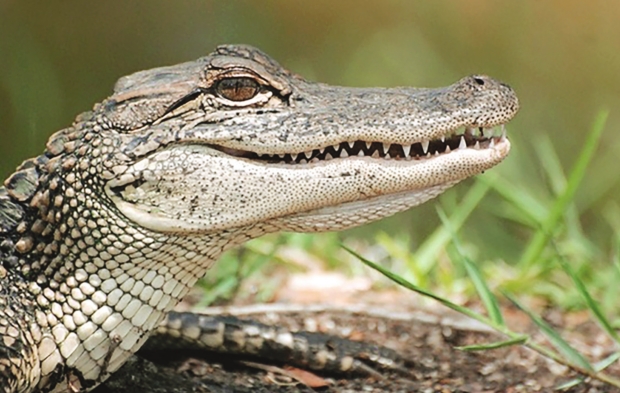
On October 13, 1901, a crowd gathered to watch a hunt.
The Boston Globe recounted how “Bostonians left their business” to see a gardener try to remove three alligators from a public fountain.
The animals were not intruders, but a public display. The city budget that year included $30.91 for, “Food for cats, dogs, and alligators.”
If successful in his mission, the gardener would transport the gaters from their “happy summer home” to “winter quarters in the conservatories at Franklin Park.”
One alligator was captured easily, “quite unconscious that anything in particular was happening.” The gardener carefully slipped a metal loop around the animal and pulled him to the shore, where an assistant was waiting.
The next two put up a fight. It took three hours to capture the biggest of them. By two o’clock that afternoon, the job was done.
William
Doogue, superintendent of Common and Public Grounds from 1878 to 1906,
owned the alligators. Doogue oversaw the Public Garden and introduced a
variety of plants, including palm and banana trees, rubber plants, and
canna lilies.
Doogue’s alligators didn’t appear to be a public nuisance, but several residents did write into the Globe to protest their being fed live rats and mice.
“Of
course, rats and mice must be killed,” an August 1901 Globe article
quotes, “but why should they be killed in public for fun?”
The
writers went on to request, “Let us send away the alligators rather
than permit people to feed them with poor little live victims.”
Today,
the Public Garden hosts over 80 species of plants. Winding paths, a
pond, and flower beds are distinct features, designed by architect
George Meacham in 1859.
A
few years earlier, Frederick Law Olmstead had begun designing Central
Park in New York City. Olmstead went on to draw up Boston’s Emerald
Necklace, a 1,100-acre chain of nine parks that include the Public
Garden.
If Bostonians
are itching to see alligators from a safe distance, the American
alligator can be found at Stone Zoo in Stoneham. Franklin Park Zoo is
home to a West African dwarf crocodile, but no gaters.
American alligators traditionally live in the wetlands of the southern United States.
At
one point, they were on their way to extinction due to extensive
hunting for skin and meat. The Endangered Species Act of 1973 made their
hunting illegal.
Alligators
are now a rare sight in Massachusetts, but they have made appearances.
In 2014, a four-foot alligator was spotted in the Charles River. It was
quickly captured by state Environmental Police. The animal had likely
escaped after being kept illegally as a pet.
Gaters
don’t make very good pets (they pack a powerful bite and live 30-50
years). They do, however, make for good entertainment in the middle of
an early 1900’s workday. Or a good read from behind the secure pages of a
newspaper.